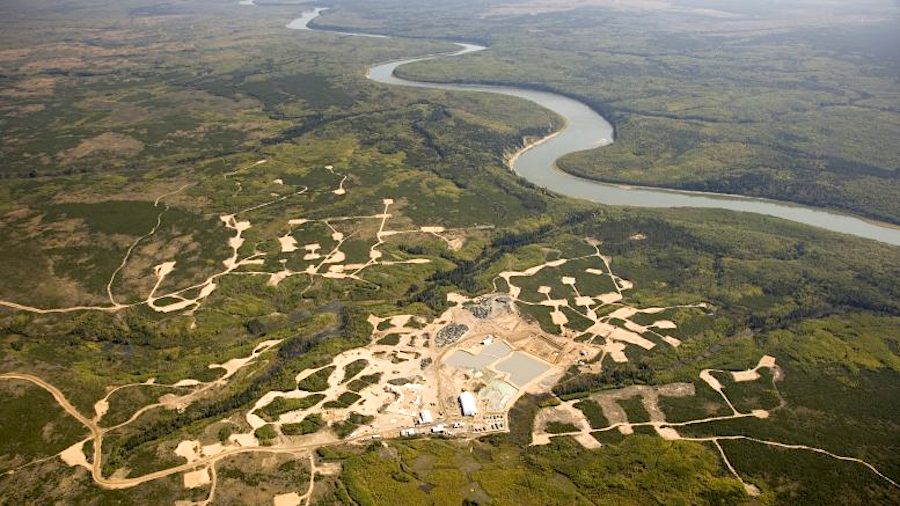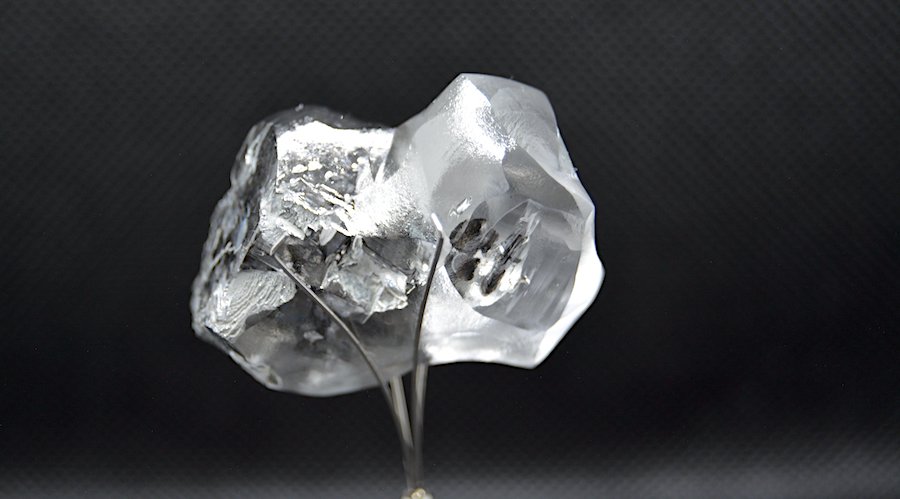NUNAVUT, SASKATCHEWAN and QUEBEC VANCOUVER, BRITISH COLUMBIA--(CCNMatthews - Aug. 16, 2004) - STORNOWAY DIAMOND CORP. reports that work on the 5.5-million acre Aviat project in eastern Nunavut has identified new kimberlite float occurrences along a 20-km long, 1.5-km wide trend in the vicinity of but distinct from previously identified diamondiferous kimberlites AV-1 and AV-2. The float is probably from proximal sources. Ground geophysics is underway in the vicinity of both occurrences to help define targets for drilling.
Like AV-1 and AV-2, the kimberlite float appears to be dominated by macrocrystic, hypapyssal type I kimberlite. The summer prospecting program began in early August and has so far focused on the Tremblay corridor in the vicinity of AV-1 and AV-2. The Tremblay corridor extends for more than 75 km and varies between 3 and 8 km in width and contains numerous kimberlitic indicator mineral anomalies identified from the 2003 till sampling program.
Aviat is being explored under a joint venture between Stornoway (70%), BHP Billiton plc (20%) and Hunter Exploration Group (10%). AV-1 and AV-2 represent the first diamond discoveries on the Melville Peninsula and helped precipitate one of the largest land rushes in Canadian history, with over 90 million acres having been acquired for diamond exploration in the eastern arctic by early 2004. Exploration expenditures of approximately $12 million have been budgeted for Aviat in 2004. See the whole story at www.stornowaydiamonds.com.
SHORE GOLD INC. of Saskatoon has announced the fourth set of diamond recoveries from the Star kimberlite. These results are for six kimberlite batches out of a total of some 80 to 100 kimberlite batches that will be processed as part of the bulk sampling program on the Star Diamond Project, the aim of which is to recover a parcel of some 3,000 carats for valuation purposes.
A total of 1,463 commercial sized diamonds (greater than 1.18-millimetre square mesh screen), collectively weighing 223.6 carats, has been recovered from the treatment of 1,256 dry tonnes of kimberlite. Thirty-two diamonds greater than one carat have been recovered and the four largest stones weigh 8.12, 7.85, 6.54 and 5.53 carats, respectively. In addition, 163 diamonds (2.6 carats) were recovered down to 0.85 millimetre square mesh. The colour of over 81% of these diamonds has been classified as white, with a further 12% classified as off-white.
These kimberlite batches have been mined from the Southeast drive and the North drive developed from the 235-metre shaft station, which is within the Early Joli Fou equivalent kimberlite. To date, some 16,500 tonnes of kimberlite have been extracted from Star as part of the bulk sampling program. All batches processed to date are classified as crater facies volcaniclastic kimberlites. Up to 25,000 tonnes of kimberlite will be recovered from the shaft and drifts and processed on site to produce this diamond parcel. To follow the developing story, visit www.shoregold.com.
Vancouver-based ASHTON MINING OF CANADA INC. is pleased to report the diamond results for the 17.83 tonnes of drill core that forms part of a 139-tonne bulk sample collected from the Renard 65 kimberlitic body. The sample was collected during the winter portion of the program undertaken by Ashton and its 50% joint venture partner, SOQUEM INC., on the Foxtrot property in north-central Quebec. Renard 65 is a north-south oriented linear body having an estimated surface area of 1.5 hectares, an approximate strike length of 280 metres and an average width of 60 metres. The Renard cluster consists of nine diamondiferous kimberlitic bodies, six of which are situated within a 50-hectare "Core Area". A principal objective of the 2004 program is the collection of a cumulative 600-tonne bulk sample from four of these bodies, Renard 2, 3, 4 and 65.
After processing through Ashton's dense media separation plant in North Vancouver, the 17.83 tonnes of material returned 4.05 carats of diamonds larger than 1.18 mm using a square aperture screen. These results gave the sample an estimated diamond content of 23 carats per hundred tonnes. The two largest diamonds recovered were a colourless, clear dodecahedron weighing 0.88 carat and a colourless, clear octahedron weighing 0.67 carat. These results are consistent with those derived from the material processed in 2002 and 2003. Ashton (www.ashton.ca) is the operator of the joint venture's exploration programs.





Comments